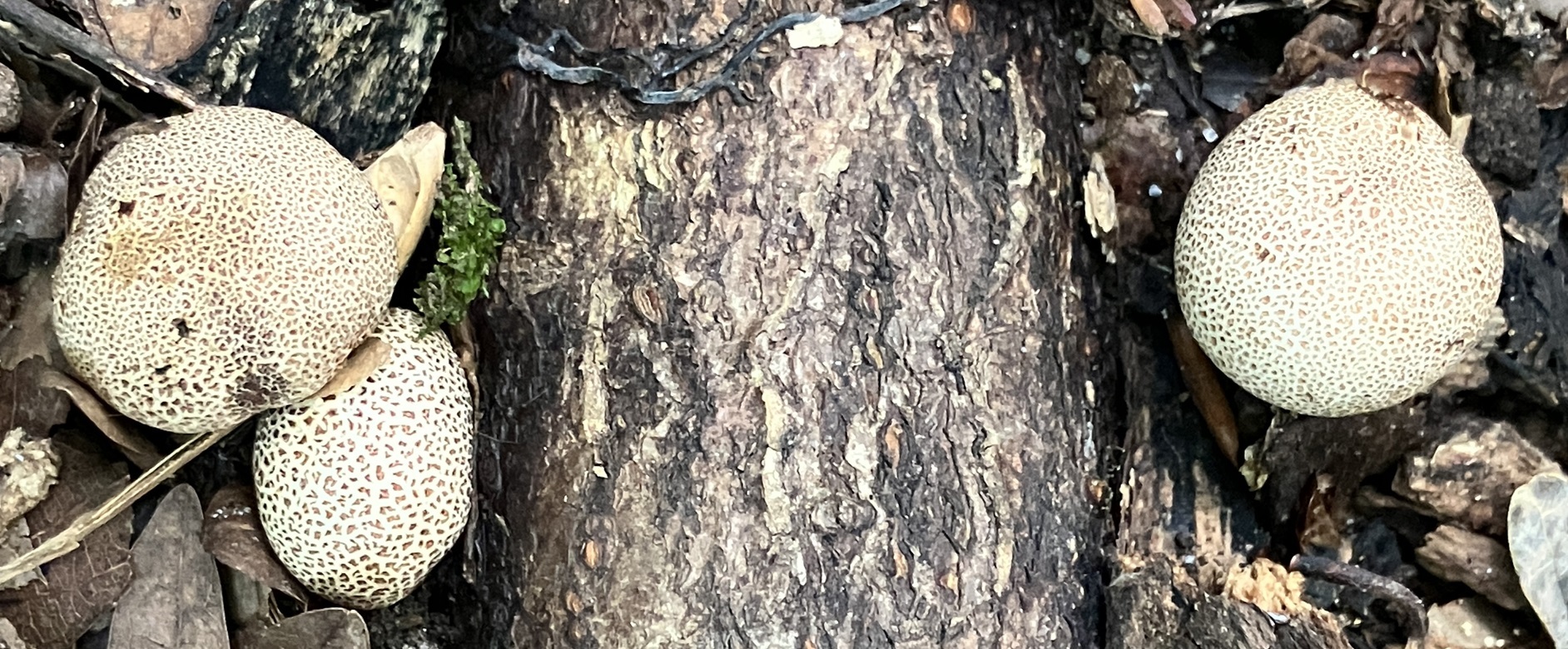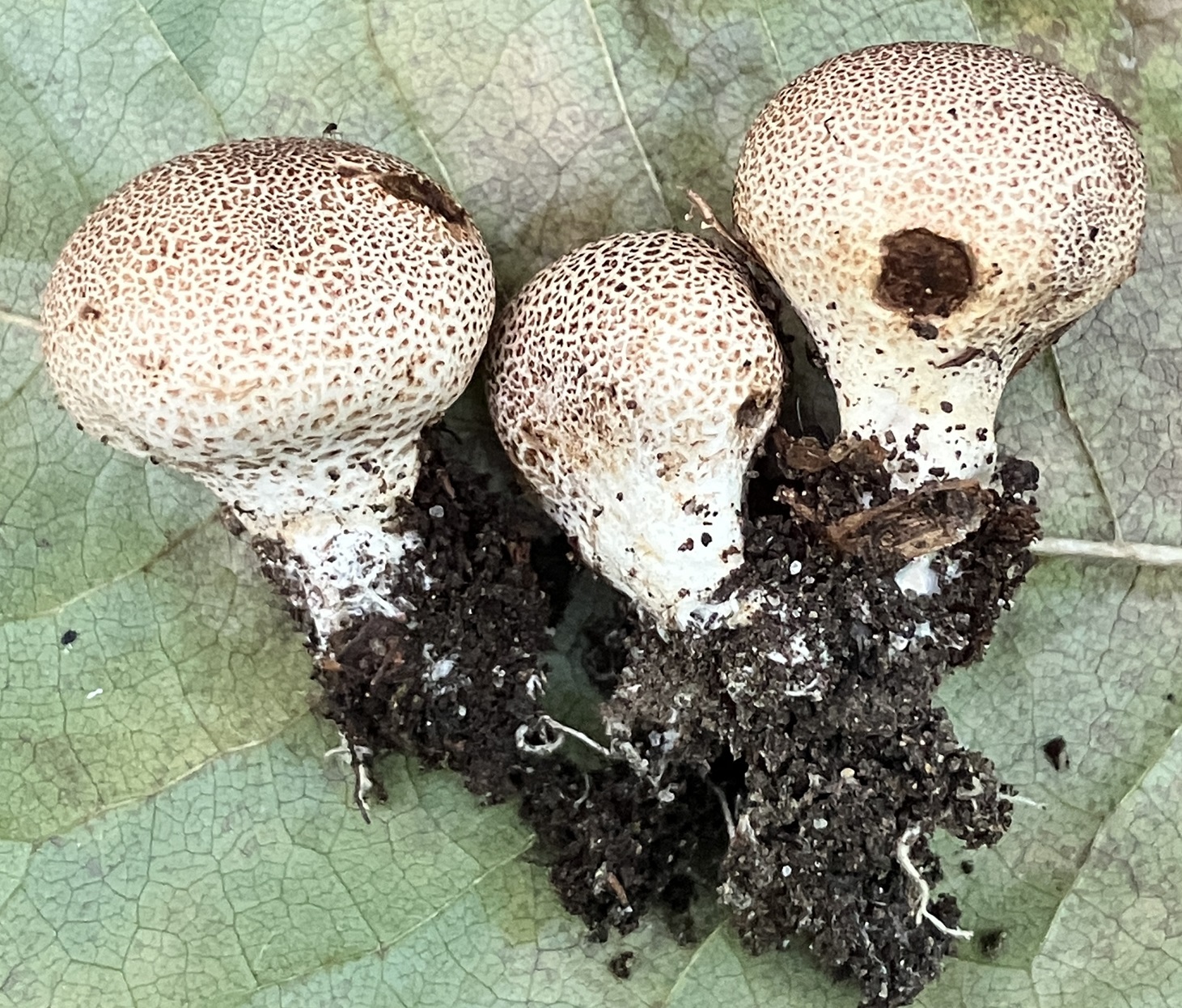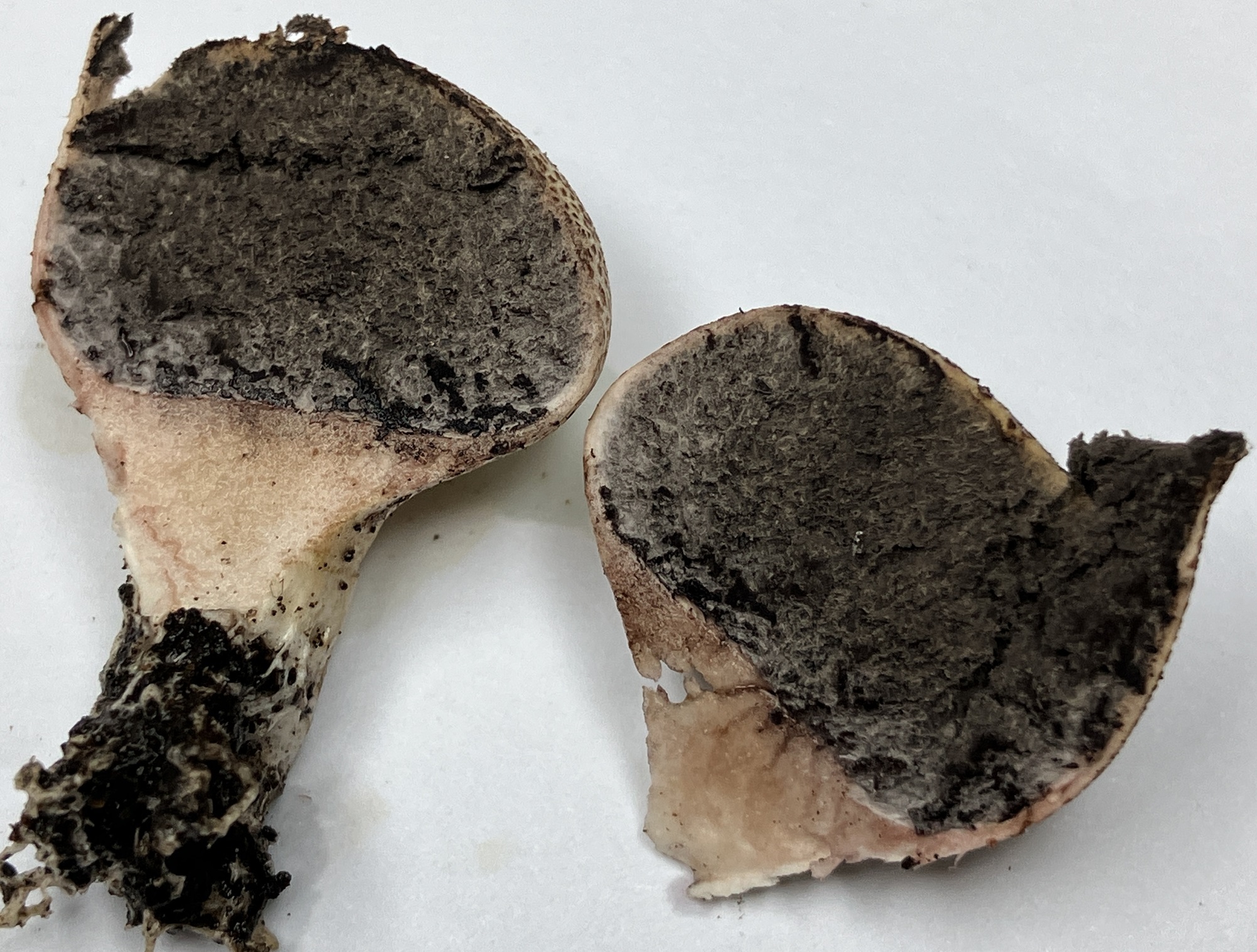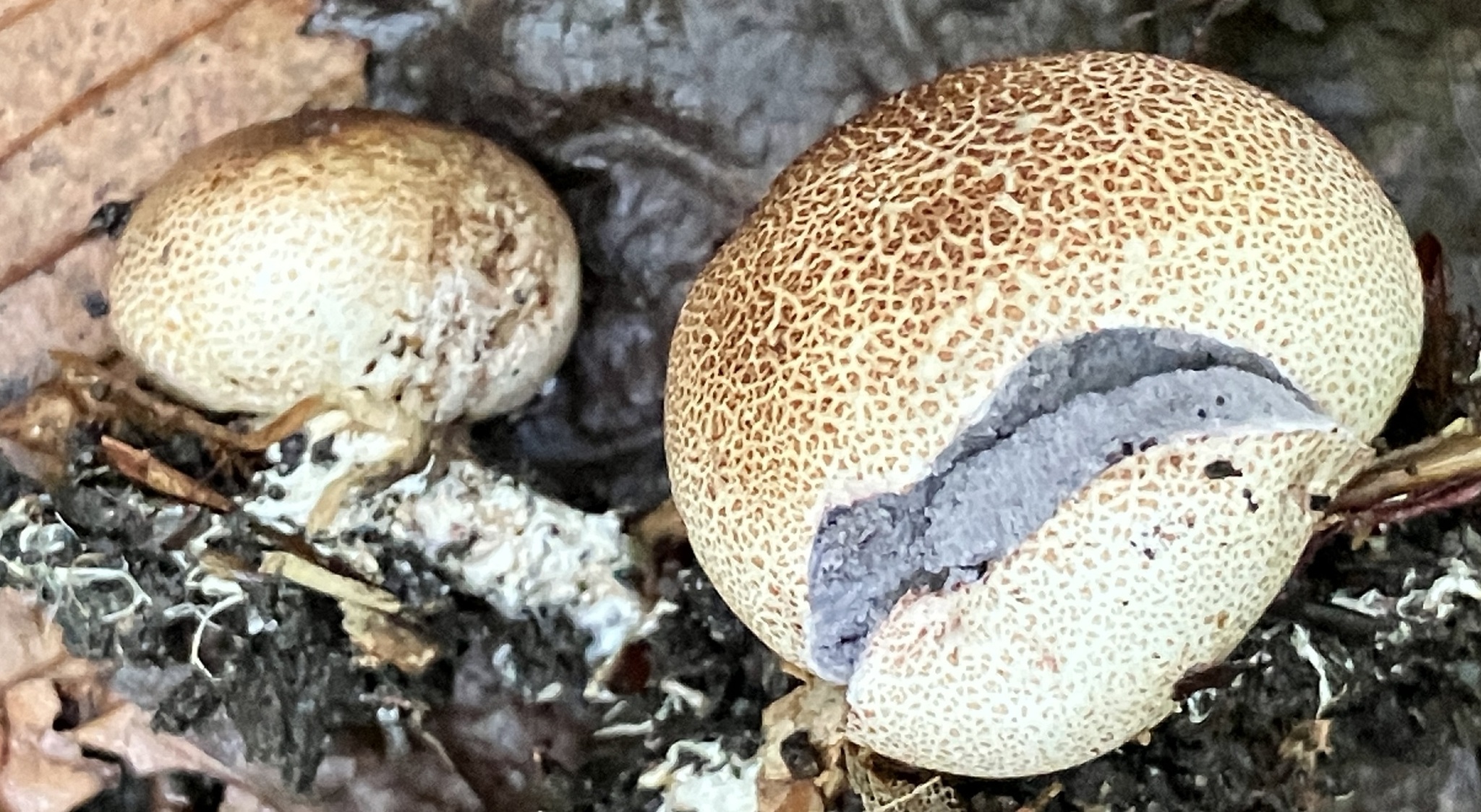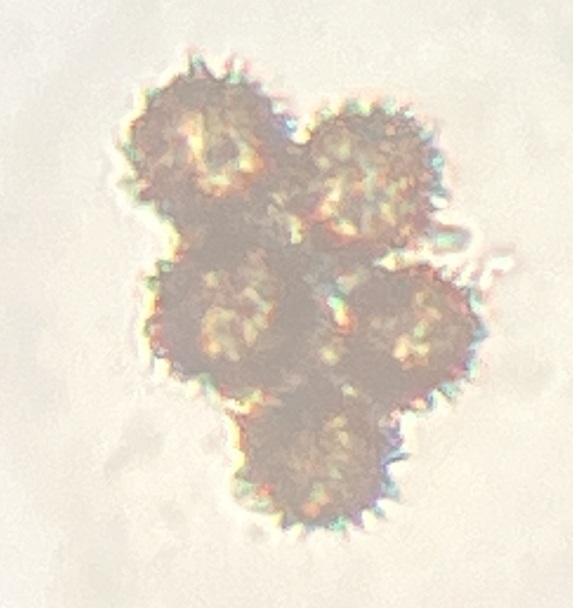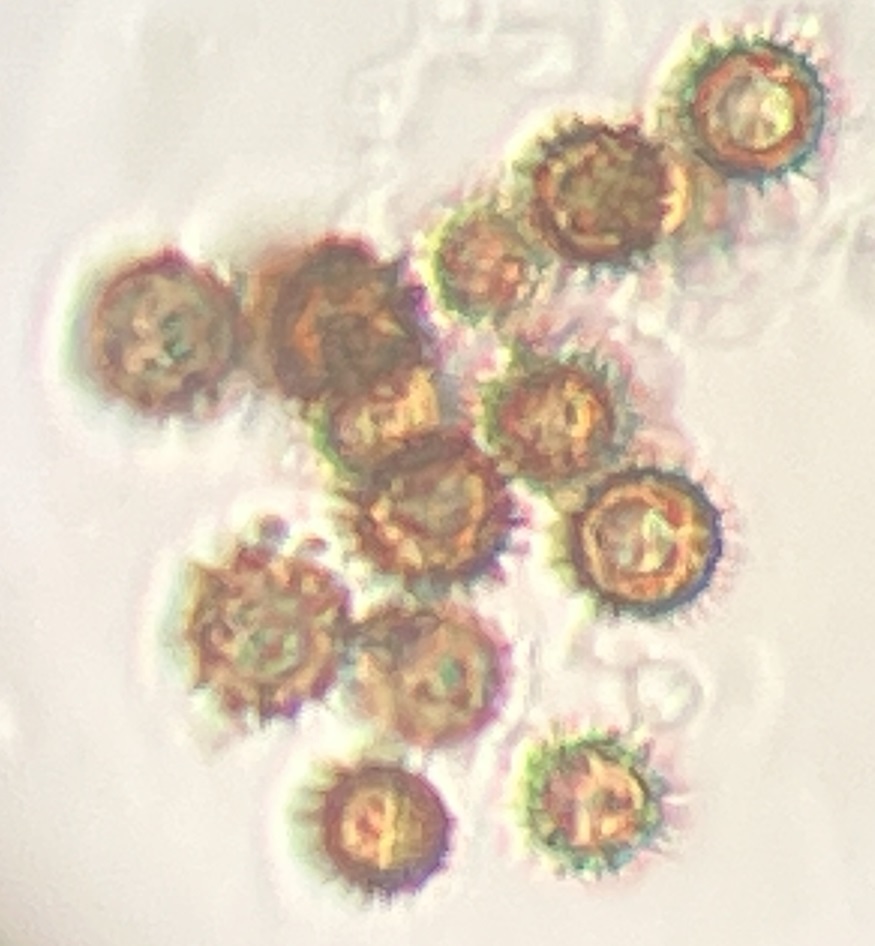Map Snapshot

3 Records
Status
Probably more common in Maryland than the few reports would suggest but the species is easily mistaken for Common Earthball (Scleroderma citrinum).
Description
A solitary or gregarious earthball growing on soil. It is typically rounded but may be pear-shaped or with a flattened top. Mature specimens are covered with simple, flat, angular, dark-brown scales. Unlike other earthballs, the spores of Leopard Earthball are covered in spines (not reticulate).
Where To Find
Leopard Earthball is typically found in disturbed habitats in hardwood forests.
Seasonality Snapshot
Source: Wikipedia
| Scleroderma areolatum | |
|---|---|
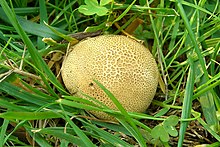
| |
| Scientific classification | |
| Domain: | Eukaryota |
| Kingdom: | Fungi |
| Division: | Basidiomycota |
| Class: | Agaricomycetes |
| Order: | Boletales |
| Family: | Sclerodermataceae |
| Genus: | Scleroderma |
| Species: | S. areolatum
|
| Binomial name | |
| Scleroderma areolatum | |
| Scleroderma areolatum | |
|---|---|
| Glebal hymenium | |
| No distinct cap | |
| Hymenium attachment is not applicable | |
| Lacks a stipe | |
| Spore print is purple-black to olive | |
| Ecology is mycorrhizal | |
| Edibility is poisonous | |
Scleroderma areolatum is a basidiomycete fungus and a member of the genus Scleroderma, or "earth balls."
Like most members of Scleroderma, S. areolatum resembles but is only distantly related to the giant puffball. It can be distinguished from the giant puffball by cutting it in half; the puffball will have a solid, denser middle, with no signs of a developing cap mushroom. They are usually 1–5 cm in diameter, and grow individually or in small groups.[1] They are commonly found in deciduous forests, in neutral soil. They are poisonous,[2] and ingestion can lead to vomiting, diarrhea, and in larger quantities, fainting.
References
[edit]- ^ Kuo M. "Scleroderma areolatum". MushroomExpert.Com. Retrieved 2009-11-26.
- ^ Phillips, Roger (2010). Mushrooms and Other Fungi of North America. Buffalo, NY: Firefly Books. p. 334. ISBN 978-1-55407-651-2.
